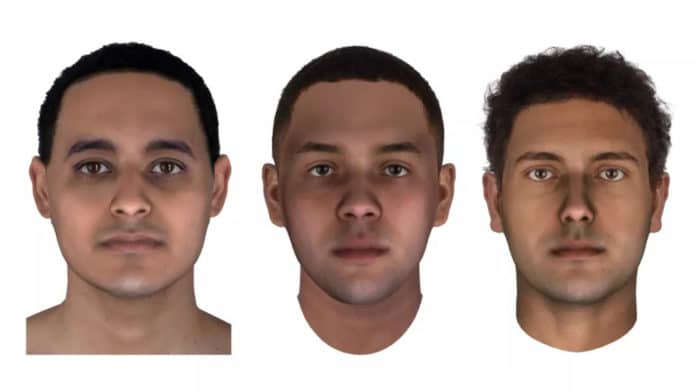Scientists at Parabon NanoLab have, for the first time, unveiled the predicted faces of three ancient mummies from an ancient Nile community in Egypt known as the Abusir el-Melech. The mummies were buried between 1380 B.C. and A.D. 425.
The mummy samples were estimated to be between 2,023 and 2,797 years old. Based on DNA extracted from their mummified remains, it was found that the mummies were men at 25.
Scientists at the Max Planck Institute for the Science of Human History in Tübingen, Germany, sequenced the mummies’ DNA in 2017. Enzymatic damage repair was performed on each sample, after which they were sequenced with a capture assay targeting 1.24 million single nucleotide polymorphisms (SNPs) and aligned to the human reference genome.
Using whole-genome sequence data, scientists at Parabon performed comprehensive DNA phenotyping. Scientists used this genetic data to create 3D models of the mummies’ faces through forensic DNA phenotyping. DNA phenotyping is the process that uses genetic analysis to predict the shape of facial features and other aspects of a person’s physical appearance.
Scientists predicted men’s ancestry, skin color, and facial features using a phenotyping method called Snapshot. Their complexions were predicted to be light brown, with dark eyes and hair and no freckles.

Three-dimensional face morphology was inferred by predicting the values of principal face components (P.C.s), which were then transformed into 3D graphical meshes. The face predictions were compared to one another, and heat maps were calculated to show the differences between the subjects. By combining the results, scientists made predictions about skin, eyes, and hair color.
Parabon bioinformaticist and WGS analyst Dr. Janet Cady said, “Parabon has been the leader in forensic microarray analysis for years, and with the introduction of this new imputation technology, we can now handle even the most challenging samples, ancient or forensic.”
Dr. Ellen Greytak, Parabon’s Director of Bioinformatics, said, “It’s great to see how genome sequencing and advanced bioinformatics can be applied to ancient DNA samples. Just like in Parabon’s law enforcement casework, these techniques are revolutionizing ancient DNA analysis because they operate on fragmented DNA and have been shown to be sensitive down to only ten picograms of DNA.”
This analysis establishes ancient Egyptian mummies as a genetic source to study ancient human history and offers the perspective of deciphering Egypt’s past genome-wide.
Journal Reference:
- Schuenemann, V., Peltzer, A., Welte, B. et al. Ancient Egyptian mummy genomes suggest an increase of Sub-Saharan African ancestry in post-Roman periods. Nat Commun 8, 15694 (2017). DOI: 10.1038/ncomms15694
